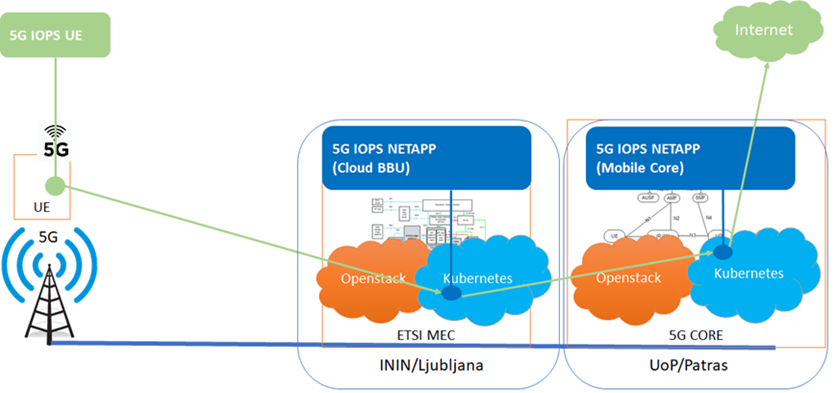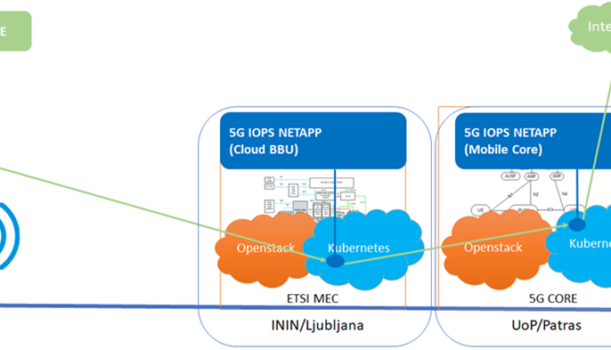INTERNET INSTITUTE Ltd. is an innovation-intensive SME, established in 2014, highly specialized in 5G, Internet of Things, and Cloud-based solutions and services. One of the company’s particular focuses, which is addressed in 5GASP, is on Emergency Response and Intervention Management tools, applications and solutions for corporate and public safety domains.
Communications in Public Protection and Disaster Relief (PPDR) sector have for a long time relied on narrowband networks. After lagging several technological generations behind the commercial sector for a long time, International Telecommunication Union (ITU) started considering LTE-Advanced systems and 5G as a mission critical PPDR technology able to address the needs of mission critical intelligence by supporting mission critical data, voice and video services. When properly matured, 5G can provide multiple services supporting various PPDR applications, e.g.: search and rescue support using emergency robots and unmanned aerial vehicles (UAVs), sensing of the affected areas using high definition (real-time) video streaming and massive Internet of Things (IoT), situational awareness, mobile office/field data applications, location services and mapping, as well as other broadband services.
So far, many nation-level broadband PPDR deployments hosted on the 4G and/or 5G-ready networks are already operational or are in the process of being deployed, e.g., FirstNet in the US, Emergency Service Network (ESN) in the UK, SafeNet in South Korea, and those expected to recently come to light: the Royal Thai Police’s 4G network (already operational in the greater Bangkok region), Finland’s VIRVE 2.0, France’s PCSTORM, Russia’s secure 450 MHz 4G network for police forces, emergency services and the national guard.. As we can see, there is a kind of common vision worldwide to improve technological base of PPDR communications, while is not obvious systems deployed in different countries would be interoperable one to another, which is somehow logical as in certain point it comes to the national security and related aspects. However, at least in EU, there are initiatives like Broadmap and Broadway which strive to make EU member states’ mobile broadband networks for Public Safety interoperable, while preserving independency of each national network and EU agencies operating in the field of PPDR (e.g., Frontex, Europol) at the same time.
Network Applications in the PPDR domain can address both end-user/vertical applications requirements and infrastructure challenges. In relation to the latter, so called Isolated Operation for Public Safety (IOPS), first introduced in 3GPPP Rel. 13, is one of the most important concepts which can be realized as a Network Application. It aims at maintaining a level of communication between public safety users by providing local mission-critical services, although with limited functionality, in case the backhaul connectivity to the core network fails or is disturbed. In general, Network Applications addressing PPDR domain should consider high availability, resilience, reliability, responsiveness, and security aspects as typical requirements for applications, services and infrastructure design, deployment, and operation.
Following 3GPPP, the goal of the “Isolated Operations for Public Safety” Network Application in 5GASP is to maintain communication capabilities between public safety users in the field, offering them local mission critical services, even in a case the backhaul connectivity to the core network is not fully functional or is disrupted. Need for such operational mode is typically needed (i) in disaster situations, when the infrastructure is damaged or destroyed, or (ii) in the out of coverage emergency cases operated in remote areas. Based on a user requirement, as already described, the Network Application needs to be provisioned via two deployment scenarios:
- standalone – the backhaul connectivity to the core network is not fully functional or is disrupted:

- distributed – complete network works without any disruption:

Standalone deployment represents the basic deployment scenario where both Network Application components, i.e., 5G core function (Mobile Core VNF) and RAN function (Cloud Baseband Unit VNF), are placed in the edge to provide isolated 5G services to PPDR users. On the other hand, the distributed deployment scenario supports separating 5G core function from the RAN function on a network function level.
Recently, INTERNET INSTITUE Ltd has presented 5G IOPS Network Application in 5GASP’s 3rd Educational webinar “Building Network Applications in the 5G Ecosystem”: https://www.youtube.com/watch?v=ZbImcSUN7_0
As well, a paper on PPDR topic focusing on experimentation facilities and use cases has been published in IEEE Access: M. Volk and J. Sterle, “5G Experimentation for Public Safety: Technologies, Facilities and Use Cases,” in IEEE Access, vol. 9, pp. 41184-41217, 2021, doi: 10.1109/ACCESS.2021.3064405.


